February Reading
I’m still adjusting to it being a new year, and yet two months are now over. This means it’s time to share my reading list for February. I managed 19 books back in January and anticipated that I would get less read in February, because it is a busy month in my day job. And, although I was right, I was pleased that I still managed to get through 17 books as well as a lot of work-related reading and research.
10 of these were for children/younger readers but, as I say often, books for children are for adults, too – and I recommend everybody takes the time to read one of these books from time to time, to keep in touch with your inner child and to see the quality writing.
Anyway, here’ my list – mostly linked to an online bookseller to provide further deatiks, but do remember to support your local bookshop when you can.
Books for Children (and adults, too!)
M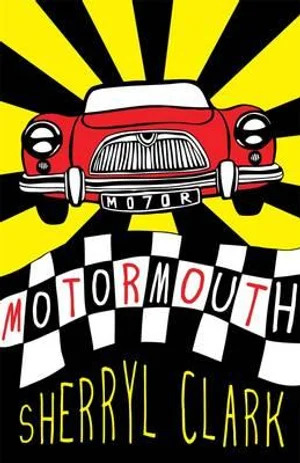 otormouth, by Sherryl Clark (Puffin, 2010). Not the first time I have read this one – or even the second. I really love Sherryl Clark’s verse novels, and love to dip back into them regularly. Motormouth is about friendship and grief, and telling lies.
otormouth, by Sherryl Clark (Puffin, 2010). Not the first time I have read this one – or even the second. I really love Sherryl Clark’s verse novels, and love to dip back into them regularly. Motormouth is about friendship and grief, and telling lies.2. 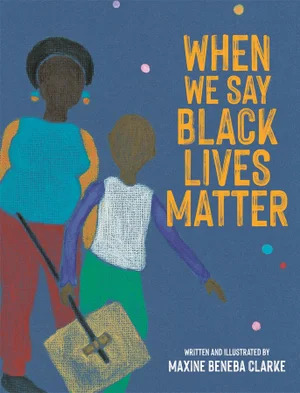 When We Say Black Lives Matter, by Maxine Beneba Clarke (Lothian, 2020). This picture book took my breath away from the moment I saw it on the bookshop shelf. I knew of Clarke’s work for adults, but did not know she had written this, nor that she was also a talented illustrator. This book tells the child reader (but also readers of all ages) in clear, lyrical language exactly why we need to keep saying, singing, and shouting that black lives matter.
When We Say Black Lives Matter, by Maxine Beneba Clarke (Lothian, 2020). This picture book took my breath away from the moment I saw it on the bookshop shelf. I knew of Clarke’s work for adults, but did not know she had written this, nor that she was also a talented illustrator. This book tells the child reader (but also readers of all ages) in clear, lyrical language exactly why we need to keep saying, singing, and shouting that black lives matter.
3. 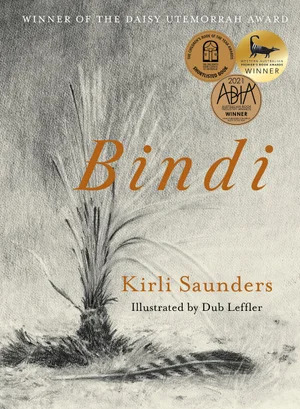 Bindi, by Kirli Saunders, illustrated by Dub Leffner (Magabala Books, 2020). Another verse novel and a really lovely one. Winner of the Daisy Utemorrah Award, which aims to grow Indigenous writing for young readers, it is clear to see why this book was a winner, and why it is likely to be recognised with further awards. Exploring climate, bushfires and healing, and set in Gundungurra Country, a special feature is the use of Gundungurra words, which appear naturally in Bindi’s first person narration and, in context, are easily accessible, but also supported by a glossary. A really special book and, since I read it, listed as Notable book in the CBCA Book of the Year Awards.
Bindi, by Kirli Saunders, illustrated by Dub Leffner (Magabala Books, 2020). Another verse novel and a really lovely one. Winner of the Daisy Utemorrah Award, which aims to grow Indigenous writing for young readers, it is clear to see why this book was a winner, and why it is likely to be recognised with further awards. Exploring climate, bushfires and healing, and set in Gundungurra Country, a special feature is the use of Gundungurra words, which appear naturally in Bindi’s first person narration and, in context, are easily accessible, but also supported by a glossary. A really special book and, since I read it, listed as Notable book in the CBCA Book of the Year Awards.
4.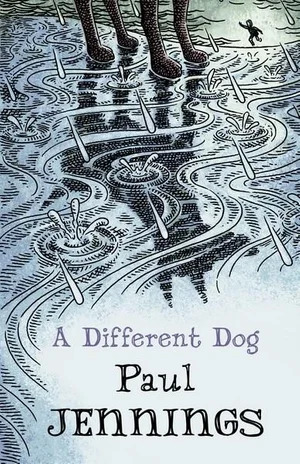 A Different Dog, by Paul Jennings (Allen & Unwin, 2017). I had missed this one when it came out in 2017, but read something last year that inspired me to track down a copy – and then, no longer sure where or what I read about it, it sat in my to be read pile until now. I’m glad it finally made it’s way to the top of the pile. A fairly quick read about a boy, a dog and an adventure, but with typically Jennings’ style twists.
A Different Dog, by Paul Jennings (Allen & Unwin, 2017). I had missed this one when it came out in 2017, but read something last year that inspired me to track down a copy – and then, no longer sure where or what I read about it, it sat in my to be read pile until now. I’m glad it finally made it’s way to the top of the pile. A fairly quick read about a boy, a dog and an adventure, but with typically Jennings’ style twists.
5. His Father’s Eyes, by Ali Cobby Eckermann (Oxford University Press, 2011). Continuing my trend of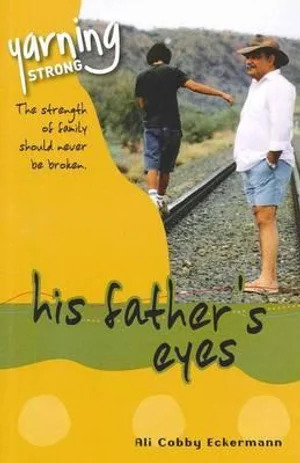 reading any Australian verse novels that I have, until now, neglected, I managed to track down a copy of this one, published as part of OUP’s ‘Yarning Strong’ series. I’m glad I did. It is beautifully crafted, telling the story of Declan, as he navigates his identity, the first year of highschool, and the challenging times his best mate is facing. At the same time, we learn of his father’s story of being stolen as a young child, and its long lasting impact.
reading any Australian verse novels that I have, until now, neglected, I managed to track down a copy of this one, published as part of OUP’s ‘Yarning Strong’ series. I’m glad I did. It is beautifully crafted, telling the story of Declan, as he navigates his identity, the first year of highschool, and the challenging times his best mate is facing. At the same time, we learn of his father’s story of being stolen as a young child, and its long lasting impact.
6. Alice’s adventures in Wonderland, by Lewis Carroll (Audible Edition). Not the first time I’ve read this one, either, but it’s always interesting to revisit a classic. A free download from Audible, I liked the performance, by Jodie Comer, and the escapism of reading this after some serious (though very good) nonfiction reading.
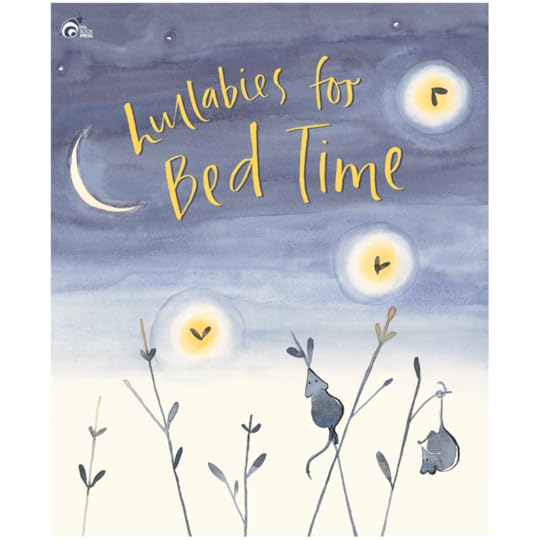 7. Lullabies for Bedtime, by Katrina Germein, Phil Cummings, Susan Betts, Kerry Brown, Louise Pike, Mike Dumbleton, illustrated by Doris Chang (Little Book Press, 2017). Very few books of poetry for children are published in Australia (which is a very great shame), so whenever I hear of one, I buy it. Somehow I’d missed this, but a writer friend mentioned it recently, and now I own a copy. As the title suggest, this is a book of gentle rhymes suitable for bed time reading to young children. They are lyrical and soothing and a pleasure to read aloud, accompanied by similarly soothing illustrations.
7. Lullabies for Bedtime, by Katrina Germein, Phil Cummings, Susan Betts, Kerry Brown, Louise Pike, Mike Dumbleton, illustrated by Doris Chang (Little Book Press, 2017). Very few books of poetry for children are published in Australia (which is a very great shame), so whenever I hear of one, I buy it. Somehow I’d missed this, but a writer friend mentioned it recently, and now I own a copy. As the title suggest, this is a book of gentle rhymes suitable for bed time reading to young children. They are lyrical and soothing and a pleasure to read aloud, accompanied by similarly soothing illustrations.
8. Short, by Holly Goldberg Sloan (Scholastic, 2017). From my TBR pile, and I’m not sure how long it has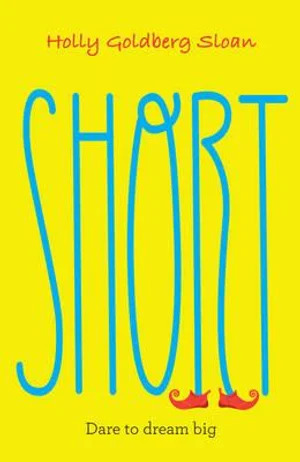 been there, or how it got there. Julia is short, and not happy about that. When her size leads to her being cast as a munchkin in The Wizard of Oz, she is initially very reluctant. But as the summer progresses she finds not just her talents but also an eclectic group of friends. A tender read.
been there, or how it got there. Julia is short, and not happy about that. When her size leads to her being cast as a munchkin in The Wizard of Oz, she is initially very reluctant. But as the summer progresses she finds not just her talents but also an eclectic group of friends. A tender read.
9. 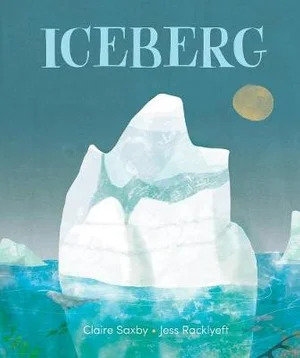 Iceberg, by Claire Saxby & Jess Racklyeft (Allen & Unwin, 2021). There are not enough superlatives to explain how much I adore this picture book. Creative nonfiction, it follows the life cycle of an iceberg and all the life around it using poetic prose which sings to the reader and is accompanied by sumptuous illustrations, including a wordless fold out spread filled with sea life. The author, Claire, is a friend, but this is not why I adore this perfect book so much.
Iceberg, by Claire Saxby & Jess Racklyeft (Allen & Unwin, 2021). There are not enough superlatives to explain how much I adore this picture book. Creative nonfiction, it follows the life cycle of an iceberg and all the life around it using poetic prose which sings to the reader and is accompanied by sumptuous illustrations, including a wordless fold out spread filled with sea life. The author, Claire, is a friend, but this is not why I adore this perfect book so much.
10. Footprints on the Moon, by Lorraine Marwood (UQP, 2021). 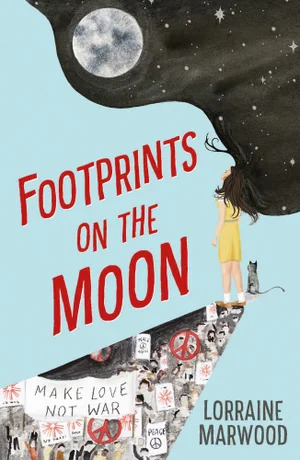 My fifth and final verse novel for the month. It is always a treat to read Marwood’s work, and this is no exception. Set against the backdrop of the first moon landing and the impacts of the Vietnam War, and exploring family, friendship, grief, courage and more.
My fifth and final verse novel for the month. It is always a treat to read Marwood’s work, and this is no exception. Set against the backdrop of the first moon landing and the impacts of the Vietnam War, and exploring family, friendship, grief, courage and more.
Books for Young Adults
Sink, Drift or Swim, by Michelle Dennis Evans (Breath of Fresh Air Press, 2017) . A verse novel I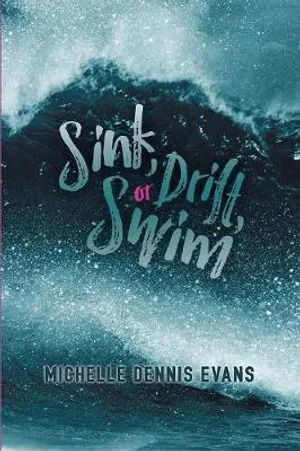 had not come across before. Rina is navigating her first crush, and the impending arrival of a new sibling, but when her father invites her on a boating trip she knows she must go. What follows is a terrifying twenty four hours where her father, and his Christian faith, are what gets her through.
had not come across before. Rina is navigating her first crush, and the impending arrival of a new sibling, but when her father invites her on a boating trip she knows she must go. What follows is a terrifying twenty four hours where her father, and his Christian faith, are what gets her through.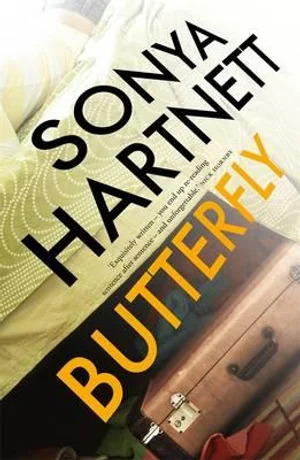 2. Butterfly, by Sonya Hartnett (Penguin, 2009). I first read this only a year or so ago, and somehow it ended up back in my to be read pile. When I picked it up I decided it was there for a reason, and reread it. I love Hartnett’s work, and this one is no exception. Plum is an almost fourteen year old who has a lot going on as her birthday approaches – friendship problems, body image problems and strained family relationships too. I’m not sure I ever come to like Plum, who is difficult throughout, but I do empathise with her and that is enough to make me want to know more.
2. Butterfly, by Sonya Hartnett (Penguin, 2009). I first read this only a year or so ago, and somehow it ended up back in my to be read pile. When I picked it up I decided it was there for a reason, and reread it. I love Hartnett’s work, and this one is no exception. Plum is an almost fourteen year old who has a lot going on as her birthday approaches – friendship problems, body image problems and strained family relationships too. I’m not sure I ever come to like Plum, who is difficult throughout, but I do empathise with her and that is enough to make me want to know more.
Fiction for Adults
Crush: Stories About Love (Midnight Sun, 2017). I bough this collection when it was newly out, and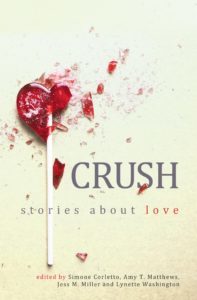 my copy is signed by one of the contributors, Vahri McKenzie who, incidentally, supervised by PhD. But, though I had dipped in and read Vahri’s story, and a couple of others, the book had then sat on on my TBR pile ever since. I’m glad I finally took it out and read it. These are not typical romance stories – they are, as the story suggests, all about crushes. Requited, unrequited, fleeting, long lasting. So much to like and to digest.The Pact, by Thomas Kenneally (Audible, 2020). An elderly, but healthy, couple making a suicide pact is an unusual premise for a book which is a pleasant read, but I really did enjoy getting to know this couple, and am still thinking about them.
my copy is signed by one of the contributors, Vahri McKenzie who, incidentally, supervised by PhD. But, though I had dipped in and read Vahri’s story, and a couple of others, the book had then sat on on my TBR pile ever since. I’m glad I finally took it out and read it. These are not typical romance stories – they are, as the story suggests, all about crushes. Requited, unrequited, fleeting, long lasting. So much to like and to digest.The Pact, by Thomas Kenneally (Audible, 2020). An elderly, but healthy, couple making a suicide pact is an unusual premise for a book which is a pleasant read, but I really did enjoy getting to know this couple, and am still thinking about them.Nonfiction
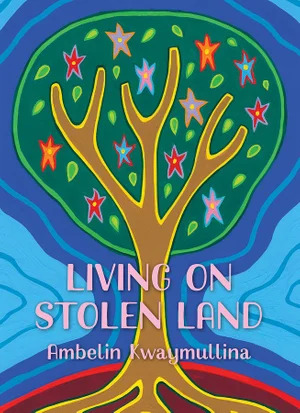 Living on Stolen Land, by Ambelin Kwaymullina (Magabala Books, 2020). This is a book which every Australian should read and digest. Written in free verse the book is a manifesto. It explains the complexities of stolen land, of recognition of our first peoples, of education, of knowledge of connection to land, and, importantly of ways to use this understanding. the use of prose-poetry makes the text accessible and lyrical, meaning it could be read by children but is suitable for teens and adults.
Living on Stolen Land, by Ambelin Kwaymullina (Magabala Books, 2020). This is a book which every Australian should read and digest. Written in free verse the book is a manifesto. It explains the complexities of stolen land, of recognition of our first peoples, of education, of knowledge of connection to land, and, importantly of ways to use this understanding. the use of prose-poetry makes the text accessible and lyrical, meaning it could be read by children but is suitable for teens and adults.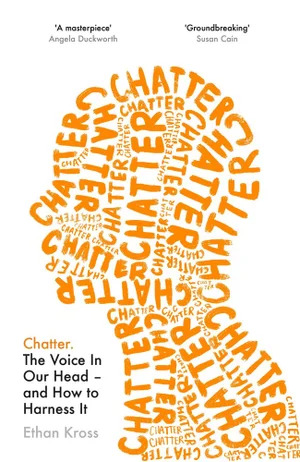 Chatter: The Voice in Our Head and How to Harness It, by Ethan Kross (Random House, 2021, also on Audible). I saw mention of Kross’s book somewhere in January, and knew immediately I needed to read this book. I listened to it on Audible as soon as it came out, and wasn’t disappointed. Kross unpacks why we have a voice in our head, and how it works against us. I also found the section on co-rumination really enlightening. I will listen to this one again, and will also be recommending it widely.
Chatter: The Voice in Our Head and How to Harness It, by Ethan Kross (Random House, 2021, also on Audible). I saw mention of Kross’s book somewhere in January, and knew immediately I needed to read this book. I listened to it on Audible as soon as it came out, and wasn’t disappointed. Kross unpacks why we have a voice in our head, and how it works against us. I also found the section on co-rumination really enlightening. I will listen to this one again, and will also be recommending it widely.
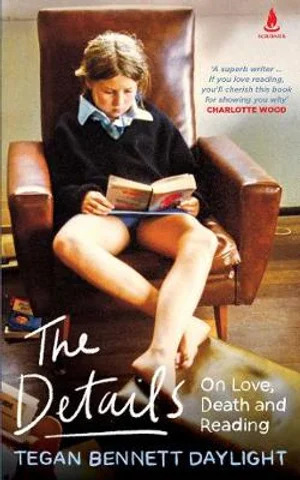 The Details, by Tegan Bennett Daylight (Simon & Schuster, 2020). This was recommended by a friend, a fellow reader. I’m glad. This is a collection of essays, linked because they all relate to books and reading. A writer and academic, the author shares in some essays intimate insight into key moments in her life including the death of her mother, the births of her children and the subsequent impact on her health, and in other chapters, close looks at favourite authors including George Saunders and her friend Georgia Blain. Even when writing literary analysis, her personal connections and her deep love of reading and writing shine through.
The Details, by Tegan Bennett Daylight (Simon & Schuster, 2020). This was recommended by a friend, a fellow reader. I’m glad. This is a collection of essays, linked because they all relate to books and reading. A writer and academic, the author shares in some essays intimate insight into key moments in her life including the death of her mother, the births of her children and the subsequent impact on her health, and in other chapters, close looks at favourite authors including George Saunders and her friend Georgia Blain. Even when writing literary analysis, her personal connections and her deep love of reading and writing shine through.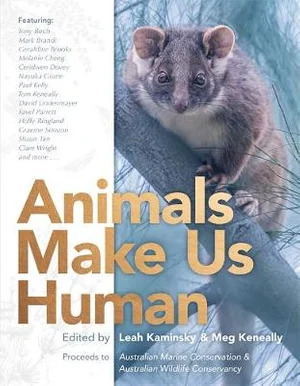 Animals Make Us Human, edited by Leah Kaminsky & Meg Keneally (Penguin, 2020). Another book that I heard about somewhere and had to have. Filled with gorgeous photography of the great diversity of Australian wildlife, and the stories of individual writer’s connection with them. Encounters with one animal, working to study or preserve a species, the awe seeing an animal in it’s natural habitat engenders – and, running throughout, the reminder that many species are threatened and the impact of climate change and the actions of humanity are to blame. Produced in response to the 2019/20 bushfires, and in support of conservation groups, this is both a delightful read and an important one.
Animals Make Us Human, edited by Leah Kaminsky & Meg Keneally (Penguin, 2020). Another book that I heard about somewhere and had to have. Filled with gorgeous photography of the great diversity of Australian wildlife, and the stories of individual writer’s connection with them. Encounters with one animal, working to study or preserve a species, the awe seeing an animal in it’s natural habitat engenders – and, running throughout, the reminder that many species are threatened and the impact of climate change and the actions of humanity are to blame. Produced in response to the 2019/20 bushfires, and in support of conservation groups, this is both a delightful read and an important one.February Total: 17 books
Year to date: 36 books



